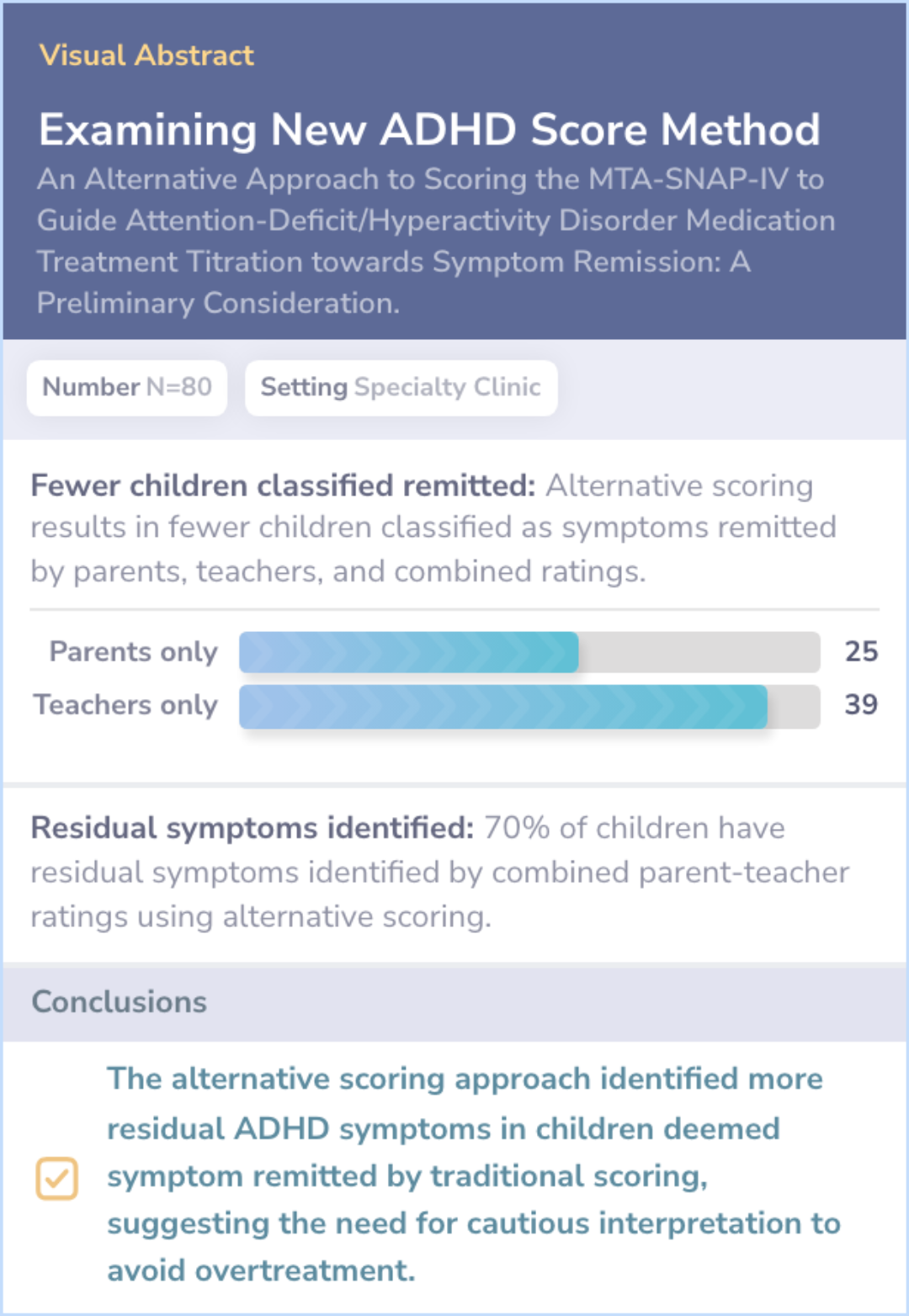Trending ADHD Papers
Visual Abstract
Variable Patterns of Remission From ADHD in the Multimodal Treatment Study of ADHD
Patterns of ADHD Remission
December 9, 2024
author
Sibley MH, Arnold LE, Swanson JM, Hechtman LT, Kennedy TM, Owens E, Molina BSG, Jensen PS, Hinshaw SP, Roy A, Chronis-Tuscano A, Newcorn JH, Rohde LA; MTA Cooperative Group
journal
Am J Psychiatry
Date Published
February 2022
Why link to a visual abstract?
What is a visual abstract?
Original
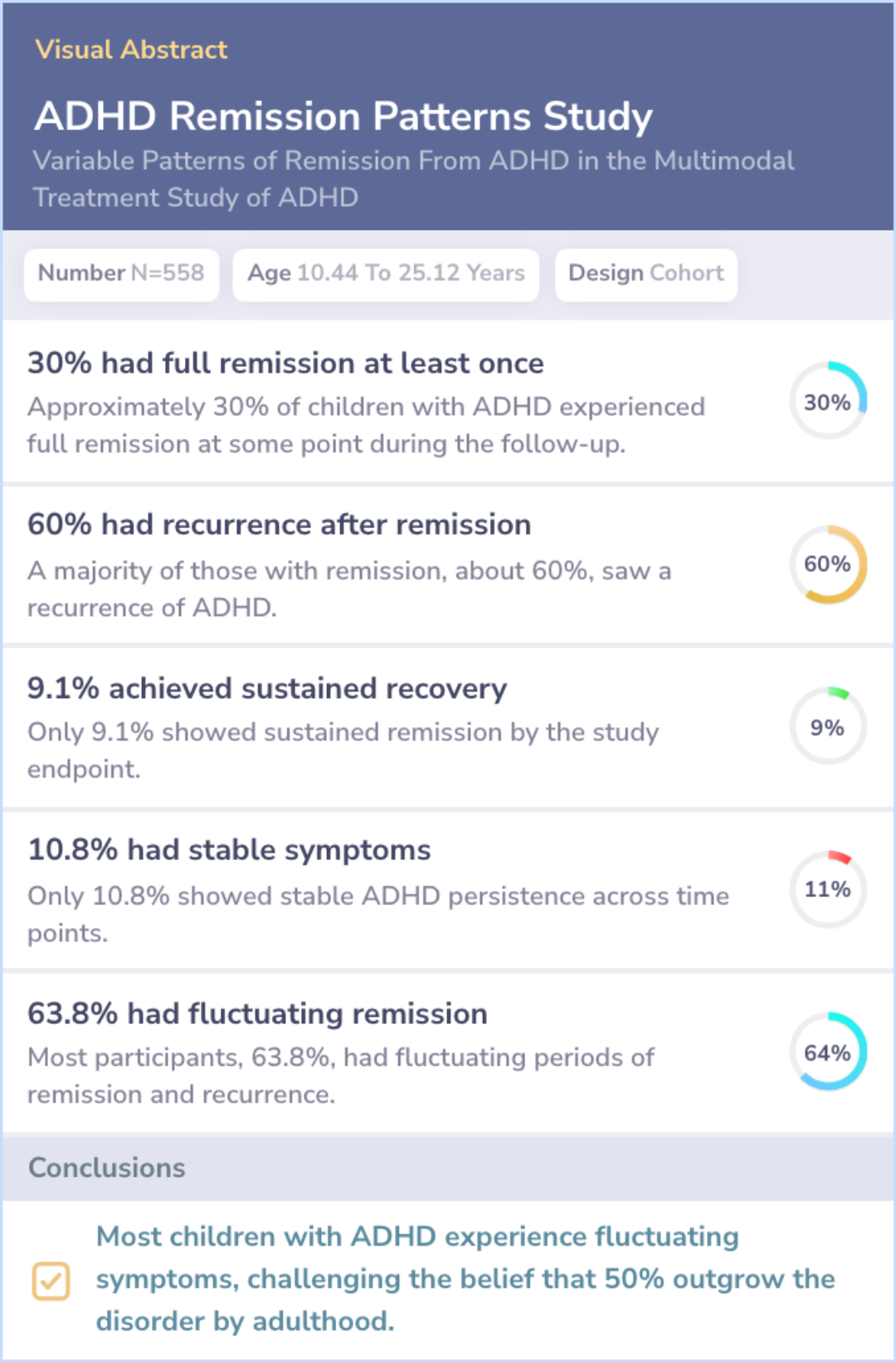
Study Summary
🔬
What They Studied
The extent to which children with ADHD experience recovery and varying patterns of remission by adulthood.
💡
What They Found
Only 9.1% of children with ADHD showed sustained remission into young adulthood, with most experiencing fluctuating symptoms.
📚
What This Means
This study suggests that the belief that 50% of children outgrow ADHD is misleading, showing instead that most conditions vary over time with recurrent symptoms.
Study Overview
Background & Objectives
Attention deficit hyperactivity disorder (ADHD) often follows children into adulthood. It commonly affects attention span and behavior. About half of affected children were thought to outgrow this by adulthood.
Recent research calls this into question by examining how ADHD changes over time. Instead of a single moment, the study tracks its progression, hoping to understand recovery rates and the ebb and flow of symptoms.
Recent research calls this into question by examining how ADHD changes over time. Instead of a single moment, the study tracks its progression, hoping to understand recovery rates and the ebb and flow of symptoms.
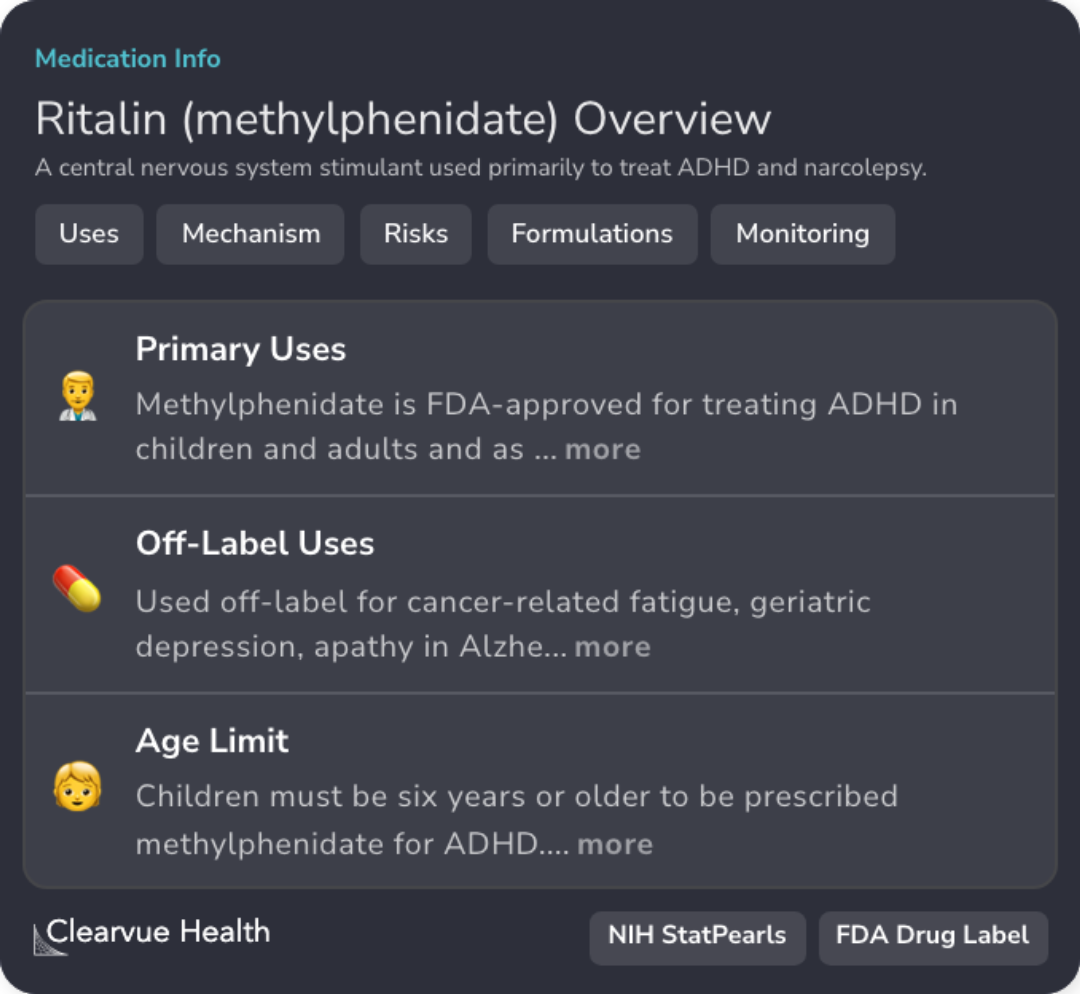
Abstract: background
It is estimated that childhood attention deficit hyperactivity disorder (ADHD) remits by adulthood in approximately 50% of cases; howev...more
Study Summary
Methods
The study followed 558 children with ADHD over multiple years. They assessed these kids eight times from around age 10 to about age 25. The researchers used reports from parents, teachers, and the individuals themselves to evaluate symptoms and other factors like treatment, substance use, and mental health issues.
They categorized the children into groups based on whether their ADHD fully remitted, partially remitted, or persisted. The team looked at how these patterns changed over the years, considering different contexts and timings.
They categorized the children into groups based on whether their ADHD fully remitted, partially remitted, or persisted. The team looked at how these patterns changed over the years, considering different contexts and timings.

Abstract: methods
Children with ADHD (N=558) in the Multimodal Treatment Study of ADHD (MTA) underwent eight assessments over follow-ups ranging from 2 y...more
Study Results
Results
About 30% of the kids experienced full remission at some point. However, 60% of these had their ADHD symptoms return later. Only a small portion, just over 9%, maintained their ADHD remission by the end of the study, while roughly 11% saw consistent ADHD symptoms throughout.
Most of the participants, almost 64%, had periods where symptoms fluctuated—sometimes better, sometimes worse—showing no clear-cut path to recovery. This pattern suggests that ADHD symptoms can be variable and ongoing.
Most of the participants, almost 64%, had periods where symptoms fluctuated—sometimes better, sometimes worse—showing no clear-cut path to recovery. This pattern suggests that ADHD symptoms can be variable and ongoing.
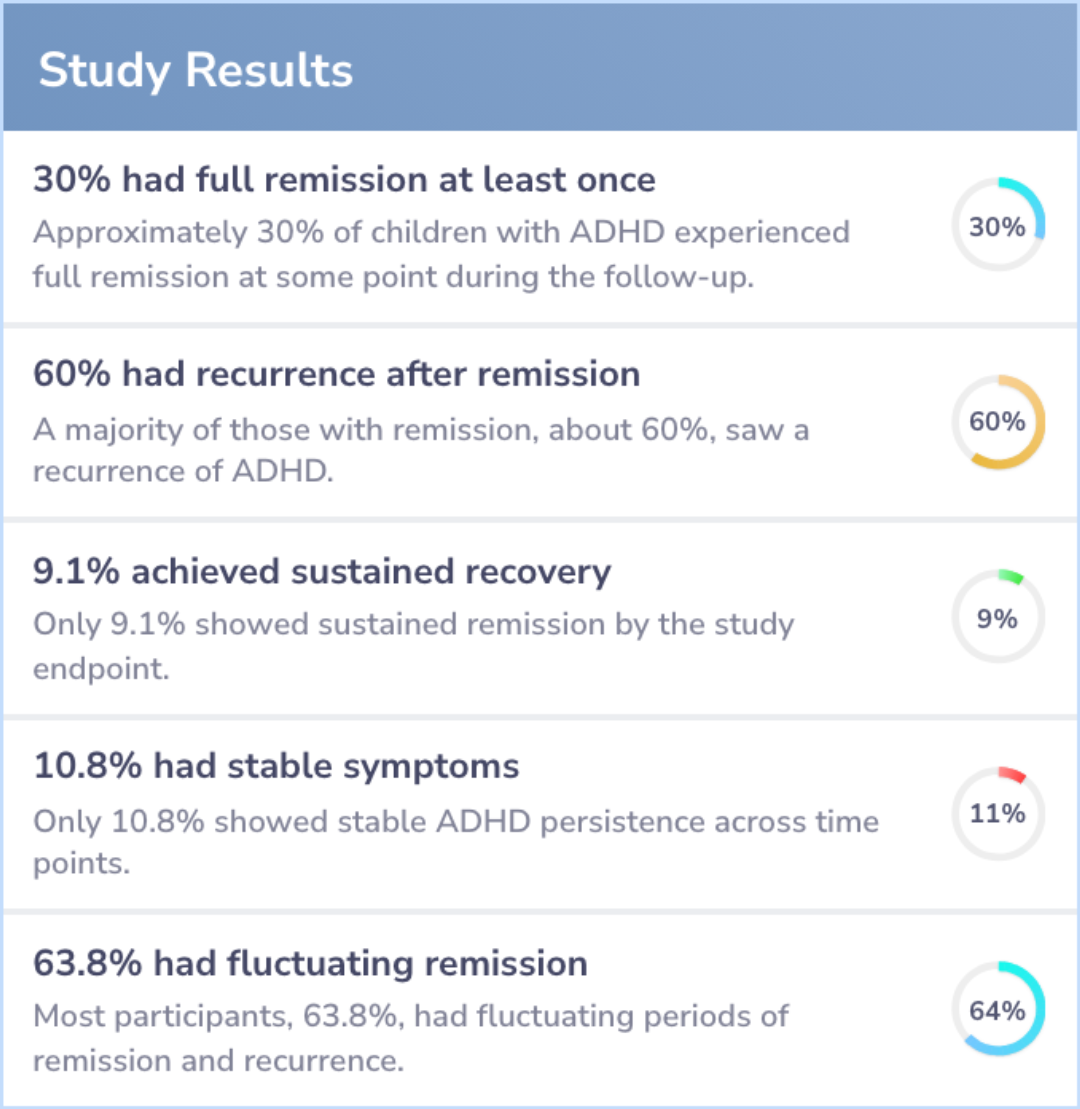
Abstract: results
Approximately 30% of children with ADHD experienced full remission at some point during the follow-up period; however, a majority of th...more
Study Summary
Conclusions
The findings suggest that the idea of 50% of kids outgrowing ADHD is misleading. Instead, many experience changing symptoms over time. Although some might see their symptoms lessen, 90% still deal with aspects of ADHD well into adulthood.
This study highlights that for most children with ADHD, symptoms don't simply disappear. Rather, these may wax and wane as they transition from childhood to young adulthood, indicating a more complex journey.
This study highlights that for most children with ADHD, symptoms don't simply disappear. Rather, these may wax and wane as they transition from childhood to young adulthood, indicating a more complex journey.
Abstract: conclusions
The MTA findings challenge the notion that approximately 50% of children with ADHD outgrow the disorder by adulthood. Most cases demonstrated fluctuating symptoms between childhood and young adulthood. Although intermittent periods of remission can b...more
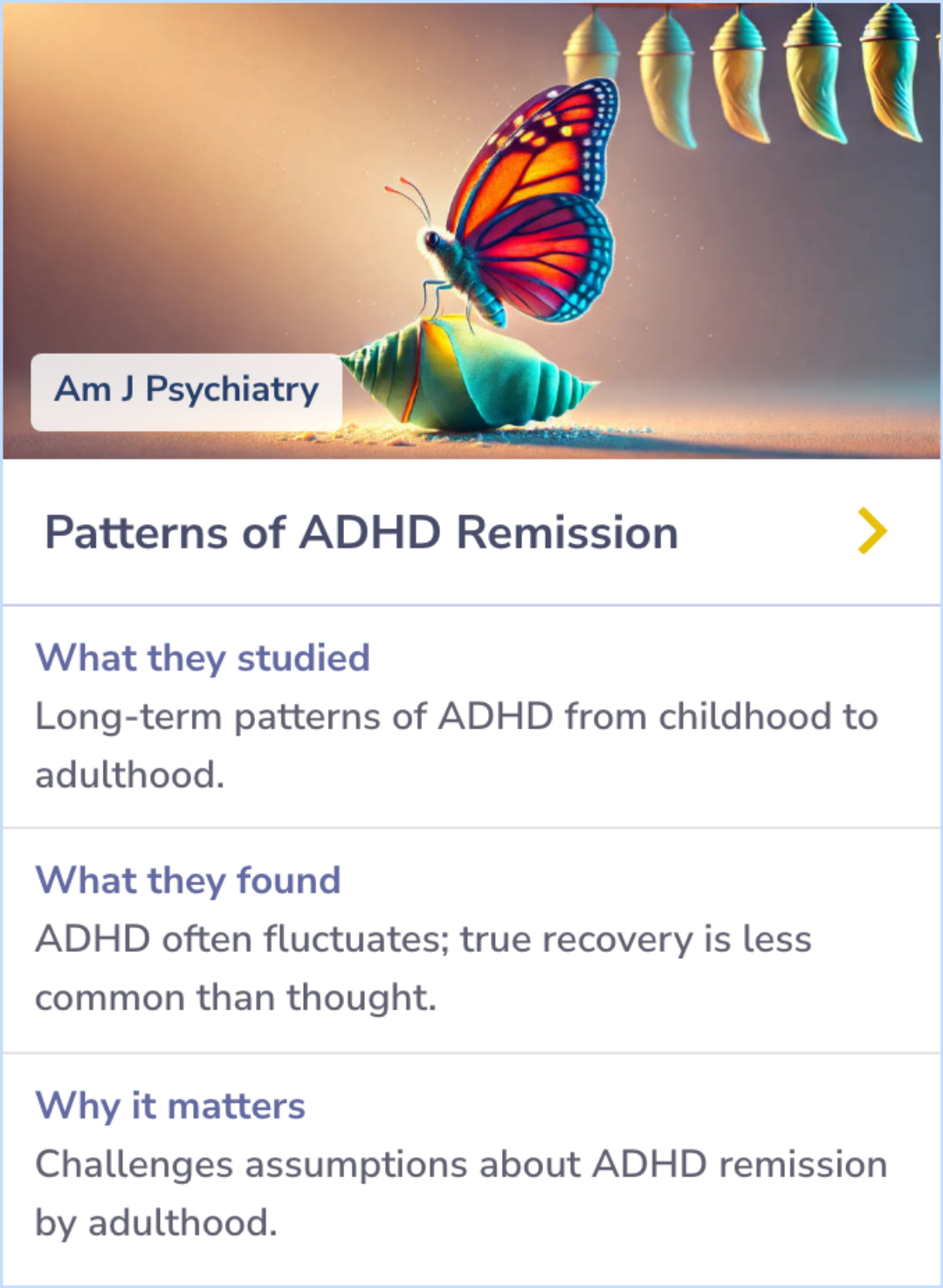
Clinical Guidelines
Guidelines suggest that ADHD requires screening for comorbid conditions, including emotional, behavioral, developmental, and physical issues. Behavioral therapy combined with medication shows beneficial outcomes based on parent and teacher feedback.
Managing ADHD involves structured care and coordination with educators and mental health professionals. Adherence to medication reduces risks like accidents and criminality.
Psychosocial interventions at home and school enhance management effectiveness.
Managing ADHD involves structured care and coordination with educators and mental health professionals. Adherence to medication reduces risks like accidents and criminality.
Psychosocial interventions at home and school enhance management effectiveness.
Literature Review
Roy et al, 2020
Core Insight:Both papers examine ADHD from childhood to adulthood but focus on different outcomes. The main paper observes patterns of symptom fluctuations across life stages, while the comparison paper investigates the impact of ADHD on adulthood motor vehicle crashes.
What It Adds:
Longitudinal Symptom Patterns: The main paper highlights fluctuating ADHD symptoms over time.
Adulthood MVC Risk: The comparison paper links persistent ADHD to increased MVC risk.
Key Differences:The main paper challenges the idea that half of children outgrow ADHD by adulthood; the comparison paper demonstrates that adults with persistent ADHD have a higher risk of MVCs than those whose symptoms dissipate.
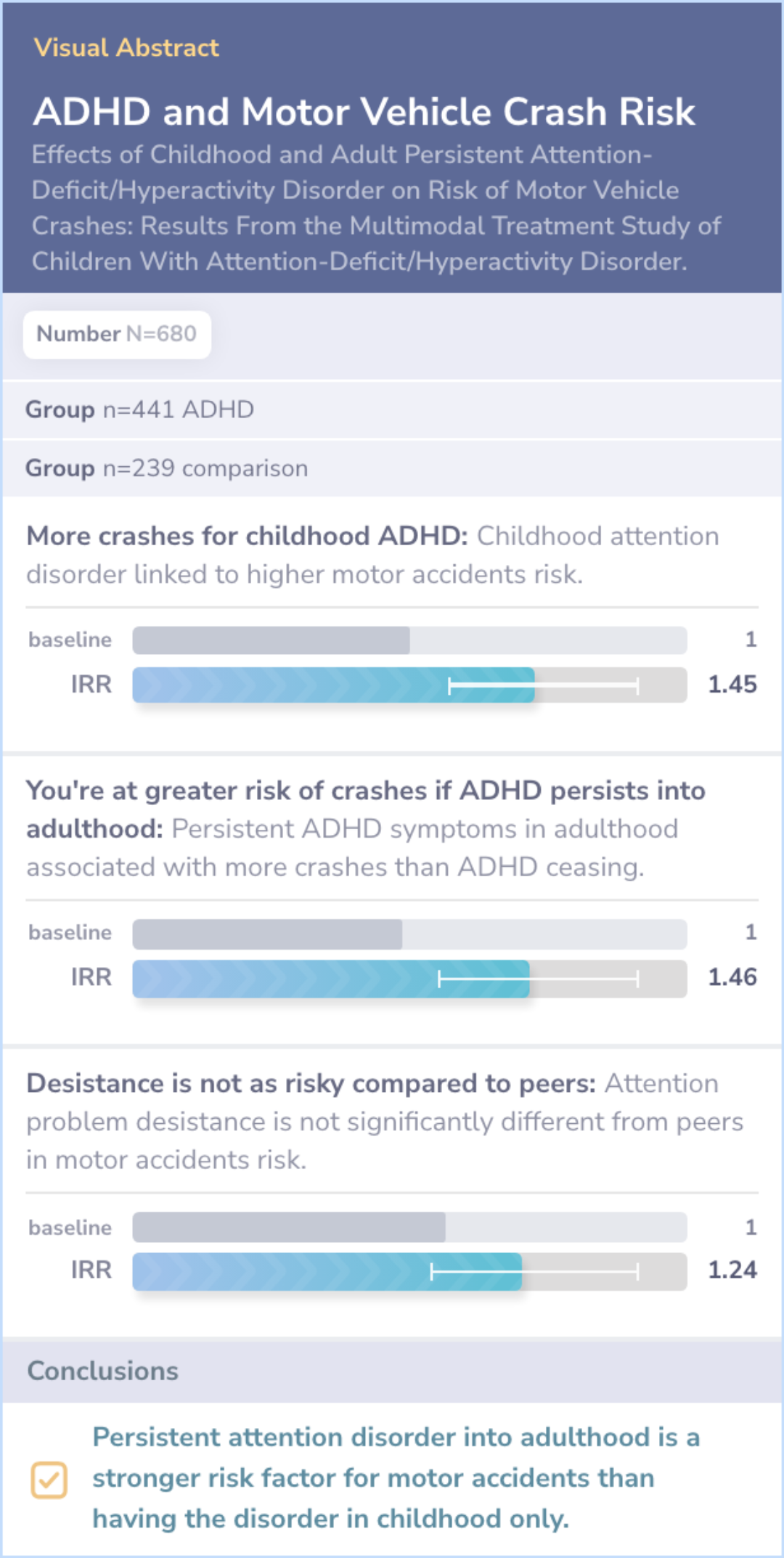
Literature Review
[Wagner] et al, [2015]
Core Insight:The primary paper reveals fluctuating ADHD symptoms from childhood to adulthood, challenging the belief that half of cases remit by adulthood. The comparison paper suggests traditional methods may overlook residual symptoms in children classified as remitted after medication treatment.
What It Adds:
Rethinks Remission Definitions: Challenges traditional ADHD remission definitions, reveals residual symptoms.
Symptom Detection: Identifies potential residual symptoms requiring further attention.
